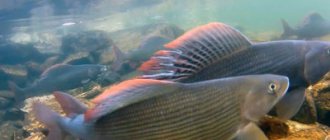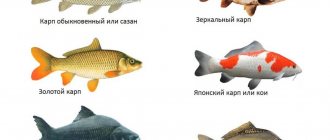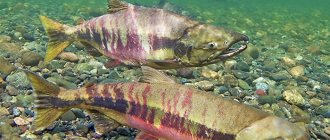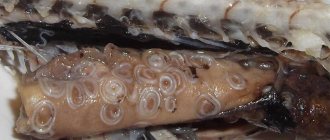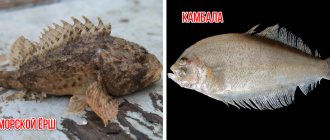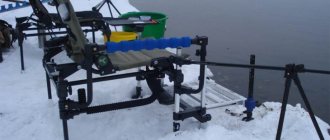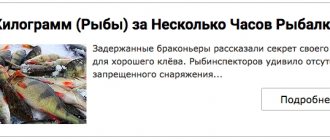History of fishing in the Barents Sea
The Barents Sea, also known as the Murmansk Sea (until 1853), washes the shores of Russia and Norway. In 1853 the sea was renamed in honor of the Dutch navigator Willem Barents and now has the familiar name “Barents Sea”. Local residents of the Kola Peninsula lovingly call it “Barentsukha”. The sea covers a huge area of 1,424,000 km², and its depth reaches 600 m. The Barents Sea is the outskirts of the Arctic Ocean.
Murmansk is a port city. Fishing in the sea is well known here. And the sea itself is an area of intensive fishing. In Murmansk you can easily find private boats to try sea fishing. You can try fishing in Murmansk by following =>link<=.
Umbozero
It is located in the north of the Murmansk region between the mountains. The water in Umbozero is incredibly clean and turquoise. The lake is incredibly deep. From the cool waters of Umbozer you can easily catch Arctic char and brown trout, pike, salmon, pike and vendace. Since the icing of the lake, winter fishing has been incredibly popular here. In the Murmansk region, in the lakes you can catch char weighing up to three kilograms and trout weighing almost the same. The tributaries of Umbozero are also rich in fish, and the waters of the Umba River flowing from it are full of grayling, which is caught here by fly fishing. This inhabitant of reservoirs sticks to the same places. In summer it can be pulled out on the rifts, but in winter it prefers deep reaches or goes into the lake.
What fish lives in the Barents Sea?
It is clear and understandable to everyone that in the sea there is a huge number of species of all kinds of living creatures, from plankton and algae to huge representatives of the marine species - whales.
The most popular types of fish in the Barents Sea are cod, herring, catfish, sea bass, halibut, flounder, haddock, burbot and others. Seals also live there and are hunted.
Often, when traveling to a fishing spot, you will be accompanied by dolphins. Playfully peeking out of the water near your boat. But a whale is a rarity, but still several times a year lucky people appear with a selfie in front of a whale.
Fishing on the region's reservoirs
Fishing in the Murmansk region, as a rule, takes place in fresh water bodies, but it can be no less interesting than sea fishing. When fishing on rivers and lakes, trophies most often become:
- salmon;
- whitefish;
- grayling;
- trout.
Fishermen who come to these regions prefer to catch salmon species. This is due to the high excitement of fishing and the excellent taste of representatives of this family.
Salmon
Salmon is one of the most valuable fish species living in the Murmansk region. If previously it was found in almost all rivers connected to the White and Barents Seas, today its population has decreased significantly. The main reason for the reduction of the salmon stock was its uncontrolled fishing in the second half of the last century.

Popular fishing bases on the map of the Murmansk region
Currently, salmon fishing is carried out under paid licenses, which allows for precise control of the stock numbers. On many rivers of the Kola Peninsula, you can catch this fish only with fly fishing gear and exclusively according to the principle “Did you catch it?” Let go! The most popular salmon rivers in the Murmansk region include:
- Tipunovka;
- Ponoy;
- Hooray;
- Varzuga.
On these reservoirs, it is not uncommon to catch trophy specimens, whose length can reach one and a half meters and weigh more than 30 kg.
Interesting! Representatives of the salmon family enter rivers only during spawning, and then slide back into the sea. The period of mass spawning usually begins in the second half of summer and lasts until the beginning of September.
Spawning occurs in early October. Despite the fact that salmon does not feed in fresh water, it actively attacks various artificial baits, protecting its territory.
Most fishermen prefer to catch salmon with fly fishing gear, which includes:
- two-handed rod, grade 8–12;
- a reel with a good friction brake and a supply of backing;
- floating cord type DT;
- sinking or floating undergrowth;
- leash 0.22–0.30 mm thick;
- front sight
A large streamer 8–15 cm long is usually used as a fly. Since fishing is carried out in a strong current, the bait must be tied to a metal tube, allowing the fly to sink into the bottom layers. You need to throw the streamer behind large boulders located in the main flow, or in places with a reverse flow, where an increase in depth is often observed.
Whitefish
Whitefish inhabit the water bodies of the Murmansk region in large numbers. This fish is especially abundant in lakes:
- Imandre;
- Umbozero;
- Kovdozero.
Despite the significant fishing pressure, individuals weighing more than 4 kg are often caught in these reservoirs. Fishing is usually done with feeder or spinning gear. When bottom fishing on a feeder, the same equipment is used as for catching other types of lake fish. Particular attention should be paid to the composition of the bait mixture. When fishing for whitefish, it is better to use red bait designed to attract trout. A dung worm is attached to the hook.
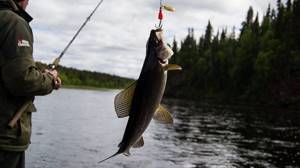
A rotating spoon is the best bait for catching grayling on the Kola Peninsula
If we are talking about fishing with a spinning rod, then small dark-colored twisters no more than 5 cm long work better as an artificial bait. The fish responds better to slow retrieval near the bottom. Whitefish fishing in the Murmansk region is most productive in the second half of summer. You can catch it not only on lakes, but also in rivers with moderate currents.
Grayling
Grayling is found in almost all small rivers of the Kola Peninsula. In addition, it inhabits some lakes located in this region. Fish that live in standing reservoirs are usually larger than their river relatives. On the river, grayling can be caught using light spinning tackle or fly fishing. Lures can be:
- small rotating spoons;
- wobblers up to 5 cm long;
- Various variations of fly fishing flies.
On a note! The lake variety of this fish is caught using a tackle called “sbirulino”, which allows you to cast the equipment over a long distance. This is very important when it comes to catching wary fish in a reservoir with clear water.
Trout
When fishing for grayling on the river, the angler's catch is often trout. This fish responds well to small rotating and oscillating spoons offered to it. Small floating wobblers of the shad type show good results.
Fly fishing for trout is very exciting. In this case, both floating and sinking flies and small streamers imitating fry can serve as bait. Small specimens of trout are more often found on fast shallow riffles, where depths do not exceed 30 cm. Larger specimens stand in holes behind boulders.
Anglers visiting the Kola Peninsula should not forget about the more common types of predators, such as perch, pike and ide. In local reservoirs they can grow to record sizes.
Sea fishing in Murmansk
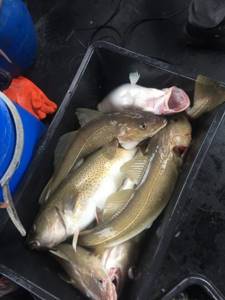
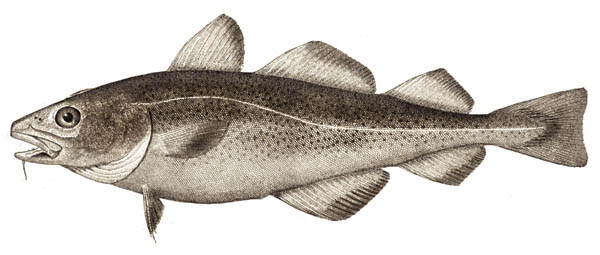
The maximum age of individuals is 25 years. The vast majority of fish that are hooked are not that big. The length, on average, ranges from 50 - 100 cm. The age of such cod is approximately 5 - 7 years. Weight can exceed 5kg.
Reviews about fishing
Vadim, Moscow. I recently visited some friends in Murmansk. I decided to discover sea fishing. Went on a paid fishing tour. Well, the emotions here are hard to put into words! The rather harsh fishing conditions and my ignorance of sea fishing did not overshadow the whole process. The ship's crew came to the rescue. And...things started)! We managed to catch almost 150 kg of cod in one day! This is an indescribable feeling of victory! Emotions just go wild even with just one memory! The bite was uninterrupted, so my hands hurt terribly after such an active holiday. But! As soon as I come to Murmansk again, I’ll immediately get ready for a new fishing tour across the sea!
Vyacheslav, Murmansk. I have lived in Murmansk since birth and quite often go fishing in local rivers and lakes. I prefer to catch peaceful fish. I mainly use worms, maggots, and bloodworms as bait. An hour before fishing, I feed the chosen place with store-bought bait. It is possible to catch from 3 to 5 kg of fish per day. I'm quite pleased with the result. After all, in addition to the catch, you get pleasure from clean air, the indescribable beauty of nature and some solitude.
Sergey, Perm. My friend and I went fishing in the Barents Sea. The weather wasn't particularly good. Strong winds were accompanied by waves. The sea did not bode well for good fishing. But a few minutes after choosing a place, an active bite began, which did not stop until the end of fishing. One after another came burbot and haddock with cod. Only the largest specimens were kept, the rest were released back into the sea. As a result, for two we got a little more than 250 kg of catch. Great time! I want to go back there again and again!
Alexey, Izhevsk. I was recently on the Ponoy River. I caught salmon fly fishing with a fly. The result of the fishing did not please me at all. During the day, only a few appeared in the cage.
Andrey, Murmansk. I fish mainly on local rivers! I love going after a predator. Once again, getting ready to go fishing, I took several wobblers with me and went to the chosen place. The morning left the fish tank empty, but after lunch there was a pike and occasionally a perch was caught. There were two gatherings in the process. Getting ready, closer to night I made the last cast home and... hit, another hit. With an incredible struggle, I pulled out a predator weighing 3.2. The total catch was 12 kg.
Judging by the reviews of regular fishermen, we can say that there was, is and will be fish in Murmansk, so it’s definitely worth going fishing here.
Start of fishing in the Barents Sea
You cannot fish in Barentsukha for small fish all year round. Navigation in the waters of the Kola Bay usually begins in mid-March and ends in November.
Recreational fishing peaks in April. In this spring month, you can stumble upon whole schools of fish and get a huge catch.
In Russian legislation there are restrictions on fishing, without special additional permits - 100 kg per person. Exceeding this limit is punishable by law.
Where does fishing take place in the Barents Sea?
The main coastal fishing area is located near the shores of the Rybachy Peninsula and Kildin Island. In this regard, there are three most popular places to start fishing:
- Fishing from Teriberka
- Fishing from Ura-Guba
- Fishing from Murmansk
The only difference lies in the fishing territory. Fishing from Teriberka is possible near the island of Kildin. Of course, you can go to Rybachy, but it’s a very long way. The Rybachy Peninsula, in turn, is occupied by fishermen from Ura-Guba. These two Settlements are located on opposite sides of the Kola Bay. These three points (Murmansk, Ura-Guba, Teriberka) are the main exits to the sea for non-industrial vessels.
Documents for going fishing in the Barents Sea
There are a number of actions that must be performed when going to sea, and indeed before starting to move.
Most of the territory of the coast of the Kola Peninsula near Murmansk is border territory. As a rule, a patrol may stop you once per exit and check your documents and cargo being transported.
Before leaving, it is mandatory to collect passport data of all passengers on board and send an application to the border guard dispatch service using a special form.
Below you can find notifications about fishing .
Fishing Notice 2021
